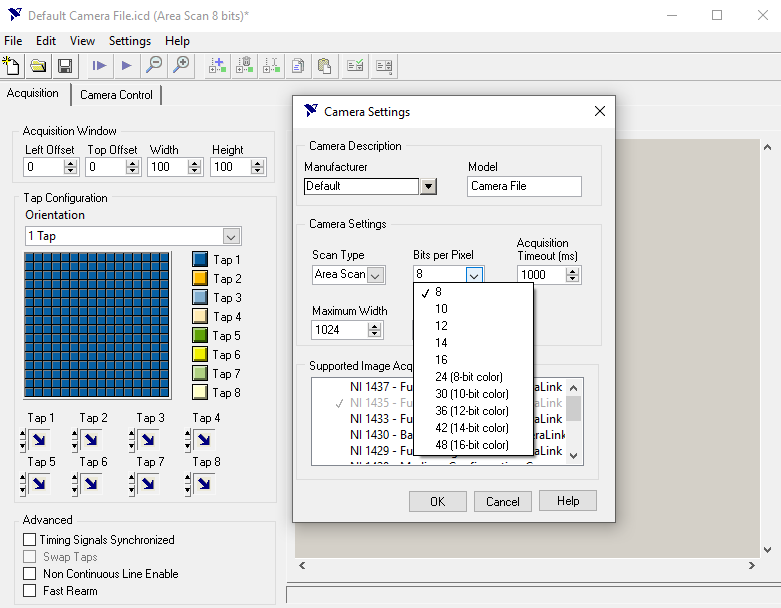Solution
Camera Link is an international image acquisition standard that is particularly useful for high-throughput applications. All Camera Link cameras require a
framegrabber, a device that captures individual frames from a video stream for use on a computer. Camera Link cameras come in several configurations which will define the image acquisition capabilities of the camera. The possible configurations are Base, Medium, Full, and Extended-Full.
- Base configuration cameras use a single MDR cable to connect to a framegrabber. They have 24 bits of data per frame and a maximum possible pixel clock rate of 85 MHz. The maximum possible throughput for a particular Camera Link configuration can be calculated by multiplying the number of data bits with the maximum pixel clock rate. For example, a Base configuration would have a maximum possible throughput of (85 MHz) x (24 bits) / (8 bits/byte) = 255 MB/s.
- The Medium, Full, and Extended-Full configurations require two MDR cables to connect the camera to a framegrabber. The Medium configuration uses 48 data bits and has a maximum throughput of 510 MB/s.
- The Full configuration uses 64 data bits and has a maximum throughput of 680 MB/s.
- The Extended-Full configuration works by repurposing some of the framing/enable signals for image data. This results in 80 data bits and a maximum possible throughput of 850 MB/s.
The following table summarizes some of the basic differences between the different Camera Link configurations:
| Configuration | Number of Data Bits | Maximum Possible Throughput (MB/s) | Number of Cables Required |
|---|
| Base | 24 | 255 | 1 |
| Medium | 48 | 510 | 2 |
| Full | 64 | 680 | 2 |
| Extended-Full | 80 | 850 | 2 |
Based on the configuration used and their maximum throughput, different
Tap Geometries can be used when configuring the camera file based on the number of bits per pixel to be used. Number of bit per pixel can be 8, 10, 12, 14, 16 and their color options of 24, 30. 36. 42 and 48 bits. As shown on the camera file setting below:
